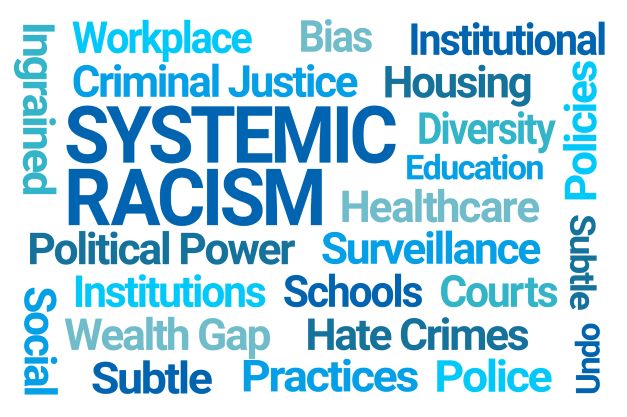
Systemic racism (a.k.a., “institutional racism” or “structural racism”) is the notion that overt racial discrimination in the past (e.g., slavery and Jim Crow laws), has left a residue on the structure of American institutions that yields ongoing inertial patterns of
discrimination. The Center for Health Care Strategies says, “Racism is embedded in society and we don’t need racists to perpetuate it.”
[1] This is a reasonable and legitimate concern—and certainly true in some respects. Unfortunately, many of the policy prescriptions aimed at rectifying these patterns fail to consider the magnitude of their present-day impact, the efficacy of proposed solutions, or the tradeoffs with other societal concerns.
A Personal Perspective on Systemic Racism
Let me reveal my personal biases at the outset. I grew up in small-town, Jim Crow-era Virginia. For my first 15 years, Virginia’s government was monomaniacally focused on “massive resistance” to racial integration and on denying full rights of citizenship to African Americans.
[2] Conditions in my hometown today suggest to me that the damage done in those years has far from vanished.
Nationally, overt racism was open and endemic up through the 1960s, at which time it did not entirely disappear but was to a considerable degree driven underground. But governmental and social institutions erected pre-1970 in the service of racism lingered on, even if their malevolent intentions had largely dissipated. Today’s housing patterns, dietary habits, access to doctors, and so forth are still influenced by this unfortunate epoch. Some of those patterns continue to have negative impacts on health in minority communities. Healthcare policies and other social policies can and ought to address lingering disparities that still persist from those long-ago abuses.
For example, old-boy networks and family connections still matter in employment and in college admissions. Redlining left terrible wreckage in minority neighborhoods—setting in motion a variety of social pathologies. At the same time, one should not dismiss the reality that well-intentioned policies aimed at ameliorating these wrongs have had perverse effects.
Welfare programs’ discouragement of work and marriage is an obvious example.
[3] According to a paper published in its own journal,
[4] The Association of American Medical Colleges (AAMC) waited 15 years after the Supreme Court’s 1954
Brown v. Board of Education ruling to “[commit] itself fully to ensuring African Americans, and all minority students, have equal and meaningful access to medical schools.” The result was that “the proportion of African American physicians to African Americans in the U.S. population” was lower in 2010 than it was in 1910.
Viewed dispassionately, structural racism can be seen as an analytical analog to William Faulkner’s maxim that, “The past is never dead. It's not even past.”
[5] And, yes, Faulkner himself was an ambiguous figure on racial matters.
[6]
Structural racism has analogs in classical liberal thinking. Economist
Dierdre McCloskey[7] postulates that prior to Western Europe’s “Great Enrichment,” wealth and income had been perpetually depressed by a gauzy anti-entrepreneurial attitude that hung over society, sustained by the rhetoric of various societal institutions. Economist
Donald Boudreaux refers to this unwritten phenomenon as a “dishonor tax.”
[8] Structural racism could be said to constitute a parallel “nonwhiteness tax”—a plausible economic concept worthy of investigation, measurement, and public policy.
Thomas Sowell
[9] and
Roland Fryer[10] have investigated and measured the effects of systemic racism. Their analyses stress that (1) The impact of systemic racism on health and other variables is greatly overstated by some in the policy sphere, and (2) The mere existence of disparities does not constitute prima facie evidence of bias. Their work is strikingly exhaustive and persuasive. But purveyors of systemic racism theory are often disinclined to consider such evidence or to debate it dispassionately and honestly. (To be honest, some classical liberals may be too willing to dismiss the idea of systemic racism out-of-hand.)
Excesses of Policy Proposals
So, systemic racism is a plausible concept, worth investigating in detail and worthy of public policy interventions at times. But, as stated previously, the mere existence of such effects does not inform us of the magnitude of the problem, the efficacy of ameliorative policies, or the tradeoffs with other social concerns. Ignoring these aspects can and does engender excesses in pursuit of policies. These include:
- An assumption that any health disparities between racial groups are primarily, or even exclusively, the result of racism–to the exclusion of genetics, measurement errors, etc.
- The encouragement of victimization and discouragement of personal responsibility. A 2021 publication of the American Medical Association (AMA) and the Association of American Medical Colleges (AAMC)[11] said, “People are not vulnerable; they are made vulnerable.” That publication repeatedly suggests that disparities are the result of intentional acts of malevolent parties. At times, the tract descends into quasi-Marxian gibberish. Doctors, it says, should not say, “Low-income people have the highest level of coronary artery disease in the United States.” Rather, the doctor should say: “People underpaid and forced into poverty as a result of banking policies, real estate developers gentrifying neighborhoods, and corporations weakening the power of labor movements, among others, have the highest level of coronary artery disease in the United States.”
- An absolutism and intolerance for debate and investigation. As journalist Bari Weiss notes, “In this revolution, skeptics of any part of this radical ideology are recast as heretics. Those who do not abide by every single aspect of its creed are tarnished as bigots, subjected to boycotts and their work to political litmus tests.”[12]
- An inclination toward speech control. The AMA/AAMC document consists largely of 54 pages of mandated speech patterns. One must not say, for example “minority” Rather, one should speak of those “historically marginalized” or “minoritized” or “BIPOC.” “The obese” and “the homeless” must become “people with obesity” or “persons experiencing homelessness.” As with those re-dubbed “Latinx” and “womxn,” one might question whether those previously known as minorities, obese, or homeless consider the ponderous neologisms to be desirable.
- For some advocates, the philosophy underlying systemic racism is not subject to refutation by logic or evidence. Its tautological, Orwellian nature is beautifully crystallized in a statement by psychology professor Angela Bell: “If you have to ask if you are a racist, you are … And if you are not asking if you are a racist, you are.”[13] This makes sense when one considers the Frankfurt School origins of a good deal of thought in the sphere of systemic racism. For example, the editors of Critical Race Theory: The Key Writings That Formed the Movement,[14] wrote: “[S]cholarship about race in America can never be written from a distance of detachment or with an attitude of objectivity. … Scholarship … is inevitably political.”
- A tendency toward a permanent regime of authoritarianism. Antiracism guru Ibram X. Kendi famously wrote: “The only remedy to racist discrimination is antiracist discrimination. The only remedy to past discrimination is present discrimination. The only remedy to present discrimination is future discrimination.”[15] Kendi has proposed a profoundly illiberal “antiracist constitutional amendment”[16]:
The amendment would make unconstitutional racial inequity over a certain threshold, as well as racist ideas by public officials (with “racist ideas” and “public official” clearly defined). It would establish and permanently fund the Department of Anti-racism (DOA) comprised of formally trained experts on racism and no political appointees. The DOA would be responsible for preclearing all local, state and federal public policies to ensure they won’t yield racial inequity, monitor those policies, investigate private racist policies when racial inequity surfaces, and monitor public officials for expressions of racist ideas. The DOA would be empowered with disciplinary tools to wield over and against policymakers and public officials who do not voluntarily change their racist policy and ideas.
Public policy prescriptions
The result of this unbridled faith in systemic racism is a proliferation of dubious and sometimes dangerous public policy prescriptions.
In 2021, Doctors Bram Wispelway and Michelle Morse outlined an “antiracist agenda for medicine” that included race-based hospital admissions.
[17] Brookings scholars Rashawn Ray and Alexandra Gibbons reject “colorblind ideology,” arguing that healthcare is “laced with racism embedded in laws, regulations, rules and procedures that lead to differential outcomes by race.”
[18]
Brookings scholar, Shadi Hamid, questions such notions.
[19] Discussing the fact that hospitals in various states had instituted racial preferences in distributing monoclonal antibodies for COVID-19, he wrote “The possibility that someone’s race could, quite literally, affect whether they qualify for lifesaving COVID treatment isn’t just another inconvenience. In theory as well as practice, it is a matter of life and death.” Specifically, he noted that one hospital network SSM Health rationed Regeneron according to a point system where “Being ‘non-White or Hispanic’ counted for seven points, while obesity got you only one point,” so “a 40-year-old Hispanic male in perfect health would receive priority over an obese, diabetic 40-year-old white woman with asthma and hypertension.”
In 2022, The American Medical Association (AMA) debated “racial reparations” and “reparative justice.”
[20] Writing in a Massachusetts General Hospital magazine, author Sarah Digiulio raises the possibility of “cash reparations—paying money to the descendants of enslaved people.”
[21] (Among other criticisms, I would suggest that the negative health effects on African Americans today is far more strongly affected by Jim Crow laws in recent times than by slavery over a century-and-a-half ago.) Interestingly, Digiulio says, “There is … little existing evidence linking monetary reparations and better health,” but expresses hope that data simulations could “fill the evidence gap.”
In June, a task force of the California state government proposed a breathtaking package of policies to address systemic racism. The task force document suggests that the state establish a cabinet-level California African American Freedmen Affairs Agency to provide reparations to the descendants of American slaves and the descendants of free African Americans of that era. Structures would include, among other things, a “genealogy branch,” a “reparations tribunal,” a “cultural affairs branch,” a “legal affairs office,” and a “division of medical services for public and environmental health.”
[22]
Conclusion
To sum it up, systemic racism is a plausible concept with some degree of veracity. However, policy advocates have a tendency to overstate the actual impacts of this phenomenon, and some have offered startlingly illiberal policy prescriptions as a remedy. The challenge for policymakers is to weigh the evidence, measure the effects, and seek policy prescriptions that are effective and that take into consideration the tradeoffs with other social goals.
Endnotes
[1] “Advancing Innovations in Health Care Delivery for Low-Income Americans Part of CHCS’ Strengthening Primary Care through Medicaid Managed Care Learning Series.” n.d. Accessed September 22, 2022. https://www.chcs.org/media/PCI-Series-Webinar_Health-Equity-7.20.21.pdf.
[2] “Massive Resistance.” n.d. Virginia Museum of History & Culture. https://virginiahistory.org/learn/historical-book/chapter/massive-resistance.
[3] “Marriage, Penalized: Does Social-Welfare Policy Affect Family Formation?” n.d. American Enterprise Institute - AEI. https://www.aei.org/research-products/report/marriage-penalized-does-social-welfare-policy-affect-family-formation/.
[4] Steinecke, Ann, and Charles Terrell. 2010. “Progress for Whose Future? The Impact of the Flexner Report on Medical Education for Racial and Ethnic Minority Physicians in the United States.” Academic Medicine 85 (2): 236–45. https://doi.org/10.1097/acm.0b013e3181c885be.
[5] Faulkner, William. 2015. Requiem for a Nun. London: Vintage.
[6] Washington Post. n.d. “Review | Faulkner Couldn’t Overcome Racism, but He Never Ignored It.” Accessed September 22, 2022. https://www.washingtonpost.com/outlook/faulkner-couldnt-overcome-racism-but-he-never-ignored-it/2020/10/01/353db184-e706-11ea-bc79-834454439a44_story.html.
[7] Mccloskey, Deirdre N. 2011. Bourgeois Dignity : Why Economics Can’t Explain the Modern World. Chicago, Ill.: University Of Chicago Press.
[8] “Boudreaux on McCloskey.” 2014. Econlib. July 8, 2014. https://www.econlib.org/archives/2014/07/boudreaux_on_mc.html.
[9] Sowell, Thomas. 2019. Discrimination and Disparities. New York Basic Books.
[10] “Commentary: It’s Time for Data-First Diversity, Equity, and Inclusion.” n.d. Fortune. Accessed September 22, 2022. https://fortune.com/2022/06/20/data-first-diversity-equity-inclusion-careers-black-workers-gender-race-bias-dei-roland-fryer/.
[11] “Advancing Health Equity: A Guide to Language, Narrative and Concepts.” n.d. American Medical Association. https://www.ama-assn.org/about/ama-center-health-equity/advancing-health-equity-guide-language-narrative-and-concepts-0.
[12] “We Got Here because of Cowardice. We Get out with Courage.” 2021. Commentary Magazine. October 14, 2021. https://www.commentary.org/articles/bari-weiss/resist-woke-revolution/.
[13] CNN, John Blake. n.d. “‘Am I Racist?’ You May Not like the Answer.” CNN.
https://www.cnn.com/2020/06/20/us/racist-google-question-blake/index.html.
[14] “Critical Race Theory: The Key Writings That Formed the Movement: Kimberle Crenshaw, Neil Gotanda, Gary Peller, Kendall Thomas: 9781565842717: Amazon.com: Books.” 2022. Amazon.com. 2022.
https://www.amazon.com/Critical-Race-Theory-Writings-Movement/dp/1565842715.
[15] Kendi, Ibram X. 2019. How to Be an Antiracist. New York One World.
[16] “Idea: Pass an Anti-Racist Constitutional Amendment.” n.d. Politico.com. https://www.politico.com/interactives/2019/how-to-fix-politics-in-america/inequality/pass-an-anti-racist-constitutional-amendment/.
[17] “An Antiracist Agenda for Medicine.” n.d. Boston Review
[18] Ray, Rashawn, and Alexandra Gibbons. 2021. “Why Are States Banning Critical Race Theory?” Brookings. November 2021.
[19] Hamid, Shadi. 2022. “Race-Based Rationing Is Real–and Dangerous.”
The Atlantic. January 30, 2022.
https://www.theatlantic.com/ideas/archive/2022/01/race-based-covid-rationing-ideology/621405/.
[20] AMA Debates Racial Reparations as a Health Initiative.” n.d. Medscape. Accessed September 22, 2022. https://www.medscape.com/viewarticle/975744.
[21] Digiulio, Sarah. 2022. “Are Reparations an Answer to Black Health Disparities?” Proto Magazine. June 17, 2022. https://protomag.com/racism-bias/are-reparations-an-answer-to-black-health-disparities/.
[22] “Reparations Reports.” 2022. State of California - Department of Justice - Office of the Attorney General. June 1, 2022.
https://oag.ca.gov/ab3121/reports.


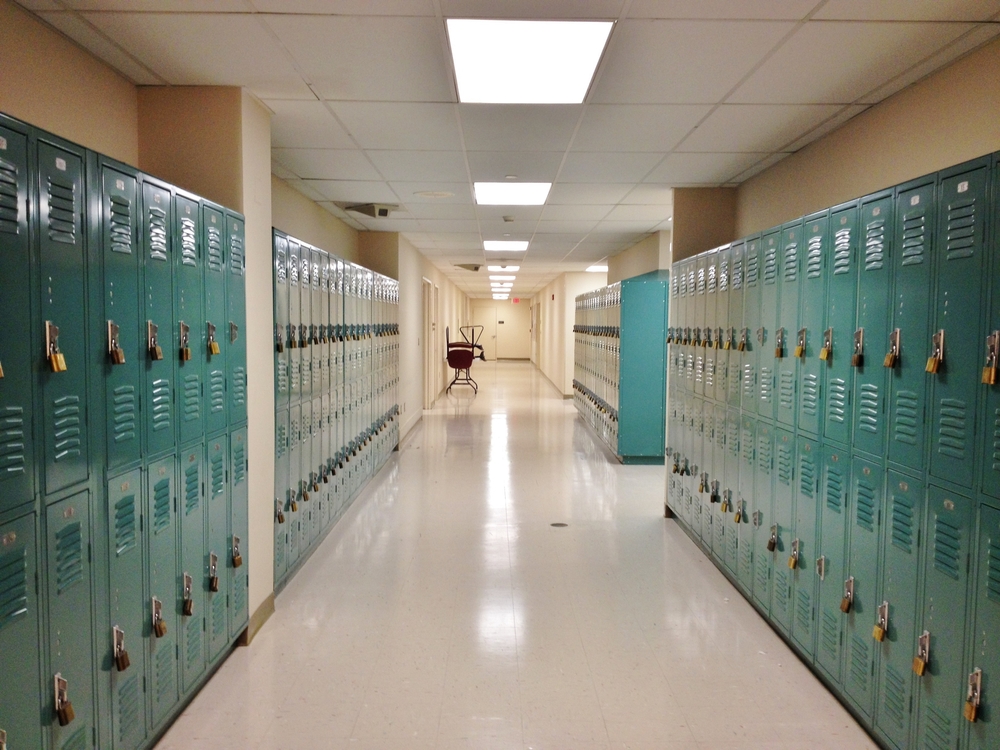
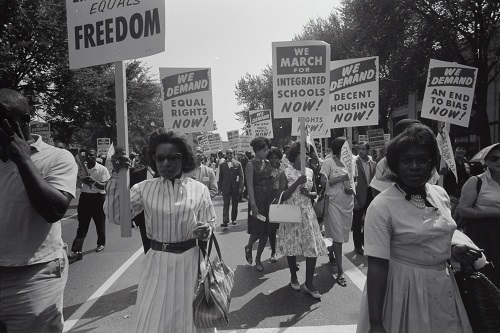
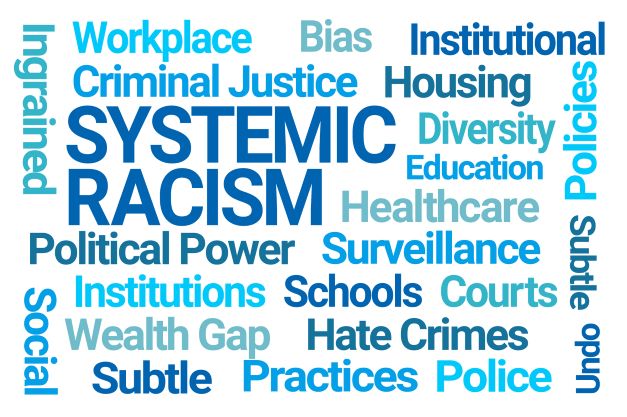 At its best, systemic race theory is the idea that (1) Slavery and Jim Crow imbedded overtly racist structures throughout American institutions; (2) Remnants of these structures still incentivize discrimination; and (3) Public policy should strive to reduce such malign incentives. At its worst, systemic race theory is an all-purpose pretext for gutting core principles of American constitutional governance and civil society.
At its best, systemic race theory is the idea that (1) Slavery and Jim Crow imbedded overtly racist structures throughout American institutions; (2) Remnants of these structures still incentivize discrimination; and (3) Public policy should strive to reduce such malign incentives. At its worst, systemic race theory is an all-purpose pretext for gutting core principles of American constitutional governance and civil society.
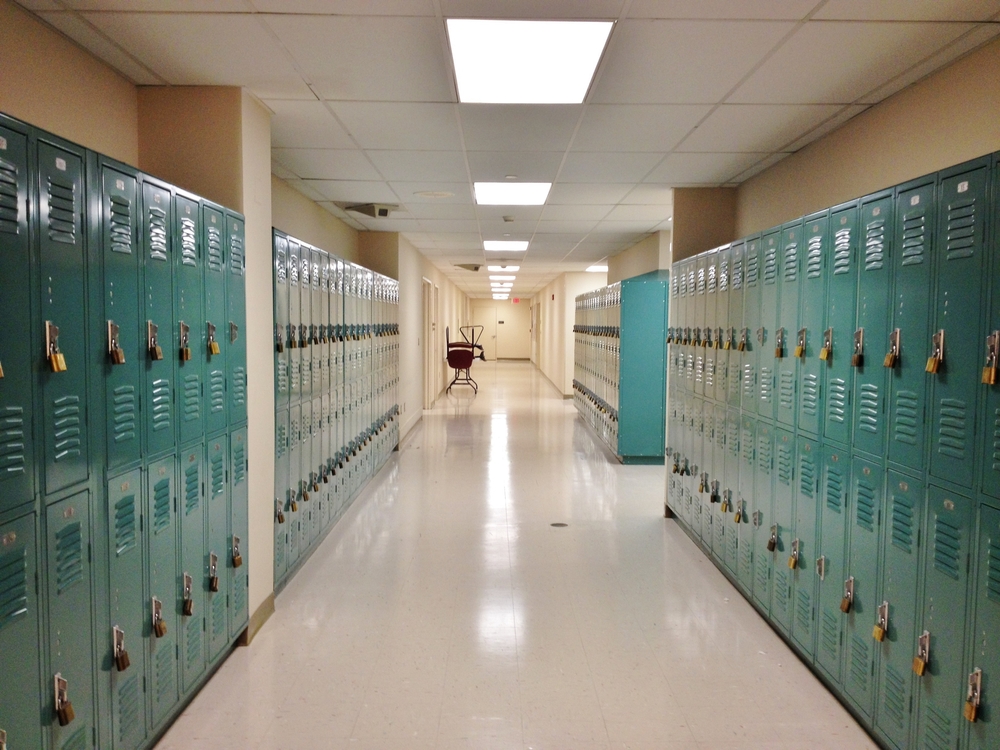 We assume that there is structural racism in the health care system, but what is the evidence? Is there any evidence that the structure of the healthcare system is responsible for disparity in outcomes? Is there a difference between the application of healthcare for similarly situated populations? Is there a difference in access between poor whites and poor minorities in the same MSA? Certainly that once was the case in the Jim Crow south where, for example, my mother had to travel to an adjoining county to give birth because her home county hospital did not admit blacks. Do such practices still exist de facto? As Dr. Bryan notes, funding for healthcare often does not reach consumers but funds bureaucracies instead. Dr. Bryan notes “There is a better way to keep Americans healthy than by transferring wealth to experts.” Perhaps that way is to fund programs that encourage individual responsibility. Given that medical schools and the medical profession are among the institutions funding trendy programs on diversity and inclusion, there is scant evidence that all the monies spent on such programs result in any change in the behavior of participants and redound to changes in the provision of healthcare. Moreover, as Dr. Bryan points out, the incentive of newly minted doctors is to practice medicine where they can maximize their incomes rather than to assuage their social consciousness.
We assume that there is structural racism in the health care system, but what is the evidence? Is there any evidence that the structure of the healthcare system is responsible for disparity in outcomes? Is there a difference between the application of healthcare for similarly situated populations? Is there a difference in access between poor whites and poor minorities in the same MSA? Certainly that once was the case in the Jim Crow south where, for example, my mother had to travel to an adjoining county to give birth because her home county hospital did not admit blacks. Do such practices still exist de facto? As Dr. Bryan notes, funding for healthcare often does not reach consumers but funds bureaucracies instead. Dr. Bryan notes “There is a better way to keep Americans healthy than by transferring wealth to experts.” Perhaps that way is to fund programs that encourage individual responsibility. Given that medical schools and the medical profession are among the institutions funding trendy programs on diversity and inclusion, there is scant evidence that all the monies spent on such programs result in any change in the behavior of participants and redound to changes in the provision of healthcare. Moreover, as Dr. Bryan points out, the incentive of newly minted doctors is to practice medicine where they can maximize their incomes rather than to assuage their social consciousness.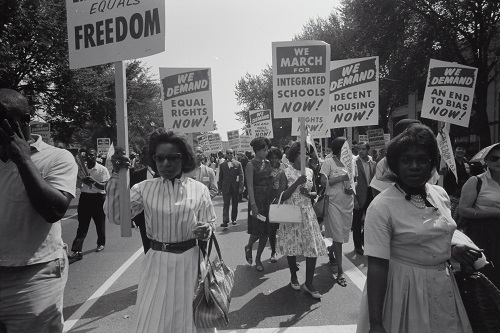 Professor Harold Black’s, Darcy Nikol Bryan, M.D.’s, and Robert F. Graboyes’s essays on education and health care, as related to “systematic racism,” are excellent in their use of data presentations and conclusions. Modeling racial inequality has always been inadequate because the effects of liberty are, for the most part, included in the models. How liberty variables affect these outdated models is important. One must develop models which take into account what people do, rather than who they are, to understand the dynamic of inequality. Systemic racism, like all system dynamic models, is difficult in any field, especially in the field of racial inequality.
Professor Harold Black’s, Darcy Nikol Bryan, M.D.’s, and Robert F. Graboyes’s essays on education and health care, as related to “systematic racism,” are excellent in their use of data presentations and conclusions. Modeling racial inequality has always been inadequate because the effects of liberty are, for the most part, included in the models. How liberty variables affect these outdated models is important. One must develop models which take into account what people do, rather than who they are, to understand the dynamic of inequality. Systemic racism, like all system dynamic models, is difficult in any field, especially in the field of racial inequality.